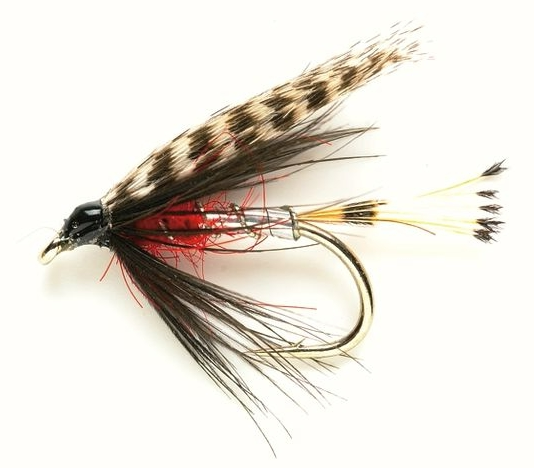As Time Goes By....No.3
- Northern Game
- Aug 25, 2021
- 2 min read
Red and black are widely acknowledged by many fly fishers as colours most likely to attract trout, and since the Peter Ross has a partly red body and black hackle, with sufficient silver tinsel added to give it that bit of ‘flash’, it is hardly surprising that it has been such a popular fly pattern.
It was commonly supposed to be taken by the trout for a freshwater shrimp, a view that has been widely debated over time and agreement never reached. It’s quite likely also that the fly is taken for a small fish, possibly a minnow or stickleback. You decide!!
However, it’s likely that its inventor, and the man who gave his name to the fly, Peter Ross of Killin, Perthshire, wasn’t greatly concerned what the trout took it for so long as they showed a taste for it!
The Peter Ross fishes best as a tail fly – well sunk and worked through the water in long slow drags and erratic jerks.
Its success isn’t limited to trout either. The pattern, dressed on a single or double hook, can be equally deadly for sea trout too.
The original dressing has a red and silver body, black hackle and a barred teal wing, but there are some interesting variants on it. The late James Orr of Greenock, a noted west of Scotland fly dresser suggested that the Peter Ross tied with a bright orange hackle instead of the black proved very deadly for trout. Ray Bergman, who was the American author of ‘Trout’ mysteriously defines the Peter Ross as a fly with a gold ribbed yellow silk body, a ginger hackle and no wing!!!
The original dressing of the trout pattern is such -
· Hook – 8 to 14 down eye
· Tying Silk – Black
· Tail – Golden Pheasant tippets
· Body – rear half flat silver tinsel and front half dubbed red wool or seals fur
· Rib – Silver wire
· Hackle – Black hen
· Wing – Barred Teal duck plumage
I prefer the seals fur option for the body as I find wool has a bit of a ‘dead’ appearance when wet whereas seals fur still has a bit of life to it.


Comments